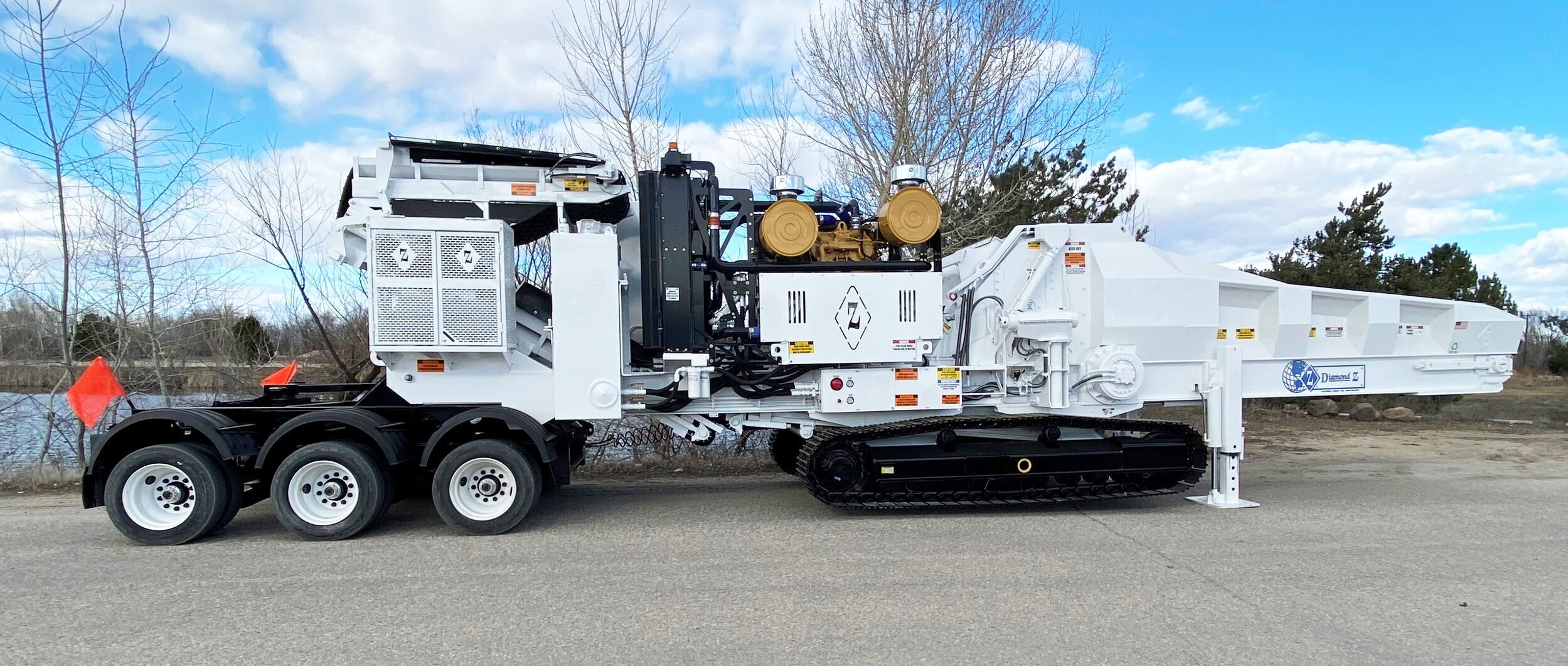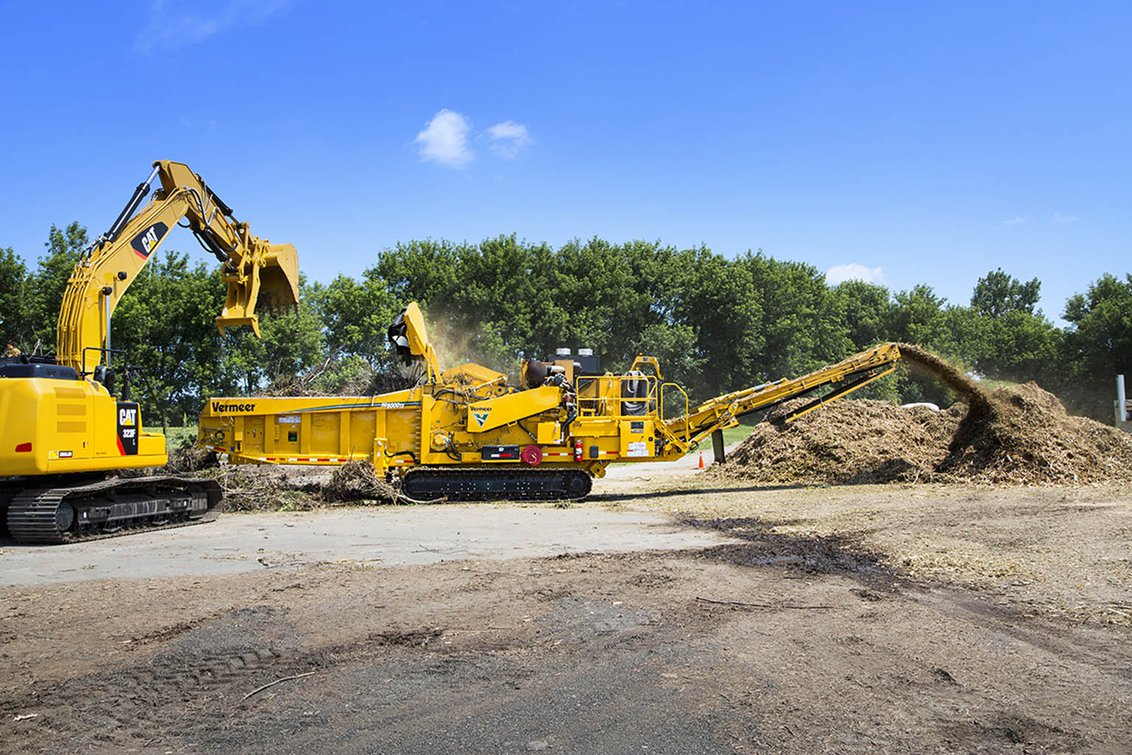Adjustable Wood Waste Solutions: Horizontal Grinder at Your Service
Achieve Cost Cost Savings and Greater Outcome With a Straight Mill for Recycling
One such option that has actually acquired grip in the reusing sector is the usage of straight mills. What precisely are the benefits of utilizing a straight mill? In this conversation, we will check out these concerns and dig into real-life situation studies that highlight the excellent outcomes accomplished by embracing a horizontal grinder.
Benefits of Using a Horizontal Grinder
Using a horizontal mill uses various advantages in the realm of recycling and waste management. Whether it is timber waste, building and construction particles, or even asphalt tiles, a straight grinder can effectively grind these products into smaller sized, a lot more manageable pieces.
An additional benefit of making use of a straight grinder is its high production ability. By making best use of manufacturing capacity, a straight mill can boost functional efficiency and eventually minimize prices.

Furthermore, horizontal mills use the advantage of generating a constant end product. By generating an uniform end item, straight mills make certain that the recycled materials fulfill the preferred requirements and can be successfully utilized in different applications.
Trick Functions of a Straight Mill
A straight grinder is outfitted with numerous key attributes that enhance its performance and effectiveness in waste monitoring and recycling processes. One of the primary functions is the effective engine that drives the grinder. These engines are usually diesel-powered and supply the required horse power to shred and grind various materials successfully. The engine's high torque permits the mill to deal with difficult materials such as stumps, logs, and construction waste effortlessly.
One more vital feature of a horizontal mill is the large feed opening. This allows for the constant and effective feeding of large products into the mill. The wide opening reduces the demand for manual work in arranging and pre-processing the waste, conserving time and increasing efficiency.
Additionally, straight mills are developed with flexible displays or grates. These screens figure out the dimension of the end product by regulating the fragment dimension of the shredded material. The capacity to change the display permits operators to generate different dimensions of ended up products, satisfying certain recycling or waste administration demands.
Moreover, straight grinders usually come furnished with a magnetic separator. This attribute aids in the elimination of ferrous products from the waste stream, guaranteeing that the last item is devoid of pollutants. The magnetic separator enhances both the top quality and marketability of the recycled products.
How to Select the Right Horizontal Mill
Choosing the ideal horizontal grinder needs mindful consideration of a number of variables to guarantee optimum efficiency and cost-effectiveness in waste monitoring and recycling operations. The initial factor to consider is the dimension and sort of product to be processed. Different grinders are designed to take care of specific materials, such as timber, environment-friendly waste, or construction particles. It is vital to select a grinder that can successfully take care of the designated feedstock without causing excessive deterioration.
Another element to think about is the preferred result dimension (horizontal grinder). Mills feature numerous display dimensions that figure out the final product size. It is crucial to choose a grinder that can create the preferred particle dimension for the designated application, whether it is for producing mulch, biomass gas, or animal bed linen
The source of power is likewise a vital consideration. Horizontal mills can be powered by diesel motor, electrical motors, or crossbreed systems. The option of power source depends on aspects such as schedule of electricity, price of gas, and ecological guidelines.
In addition, the ability and throughput of the mill must be taken right into account. The dimension of the operation and the expected quantity of material to be processed will certainly dictate the required capability of the device.
Last but not least, it is important to take into consideration the general sturdiness and reliability of the mill. Seek a reliable maker with a performance history of generating top quality tools that can endure the demands of the recycling sector.
Tips for Taking Full Advantage Of Cost Cost Savings With a Straight Grinder
To enhance price financial savings and operational performance with a horizontal grinder, it is necessary to apply effective techniques that make the most of efficiency and decrease expenses. Here are some ideas to aid you accomplish these goals:
Regular Upkeep: Conduct routine examinations and maintenance on your grinder to guarantee it is running at peak performance. This will certainly help avoid failures and expensive fixings, along with extend the lifespan of your devices.
Reliable Product Handling: Correctly feeding the grinder with the ideal quantity of product is necessary for accomplishing price savings. Overloading the mill can cause raised fuel intake and wear and tear on the device. On the other hand, underloading can cause minimized efficiency.
Optimal Grinding Methods: Explore different grinding straight from the source methods to find one of the most reliable approach for your certain materials. Adjusting the grinder's setups, such as blades speed and screen dimension, view it can assist attain the desired particle dimension while decreasing energy intake.
Proper Disposal of Residual Material: Get Rid Of the residual product from the grinding process in a affordable and environmentally friendly way. Take into consideration recycling or repurposing the byproducts to minimize waste and potentially create additional profits.
Study: Real-Life Examples of Price Cost Savings and Greater Result With a Horizontal Grinder
One such situation research involves a waste management business that utilized a horizontal grinder to process timber waste. Additionally, the horizontal grinder increased their output by enabling them to refine bigger quantities of timber waste in a much shorter amount of time.
One more situation research study involves a construction business that used a horizontal mill to reuse concrete and asphalt waste from their demolition tasks - horizontal grinder. By grinding the waste material into recyclable aggregate, they had the ability to save money on disposal prices and purchase less virgin materials for their future jobs. This not just led to substantial price financial savings however likewise decreased their environmental impact
Additionally, a recycling facility that focused on handling organic waste utilized a horizontal mill to grind and compost yard waste. This enabled them to boost their processing capacity and produce higher-quality garden compost in a much shorter timespan. Consequently, they were able to satisfy the expanding need for their garden compost items while attaining substantial price financial savings.
These real-life examples demonstrate the efficiency and benefits of using a straight grinder for recycling operations. The cost savings and increased result gotten by these business highlight the potential of this innovation in improving efficiency and sustainability in numerous markets.
Final Thought
In conclusion, using a straight grinder for recycling offers various advantages such as cost savings and higher output. Real-life case research studies display the effectiveness of horizontal grinders in attaining considerable price savings and enhanced result.
